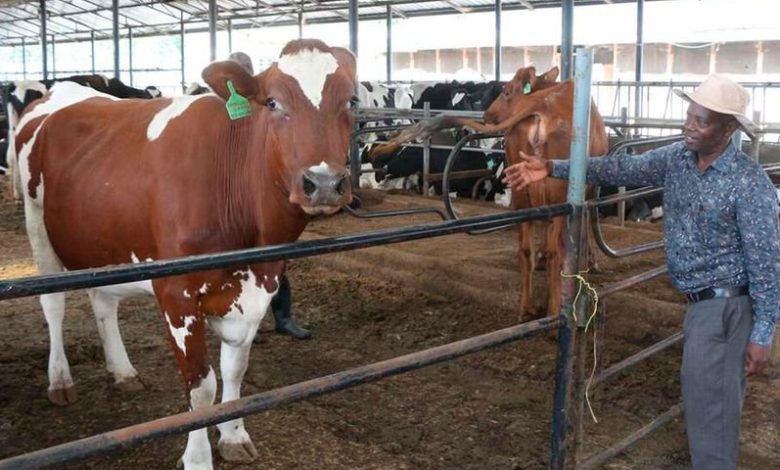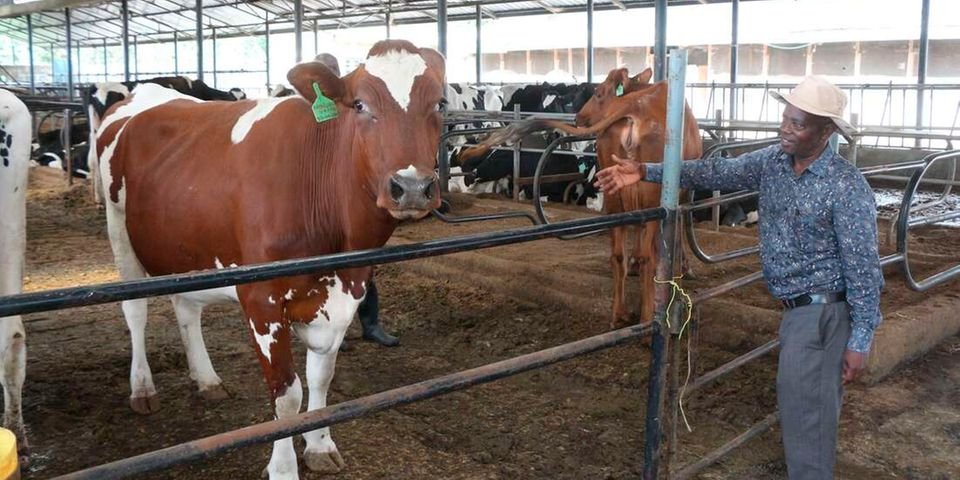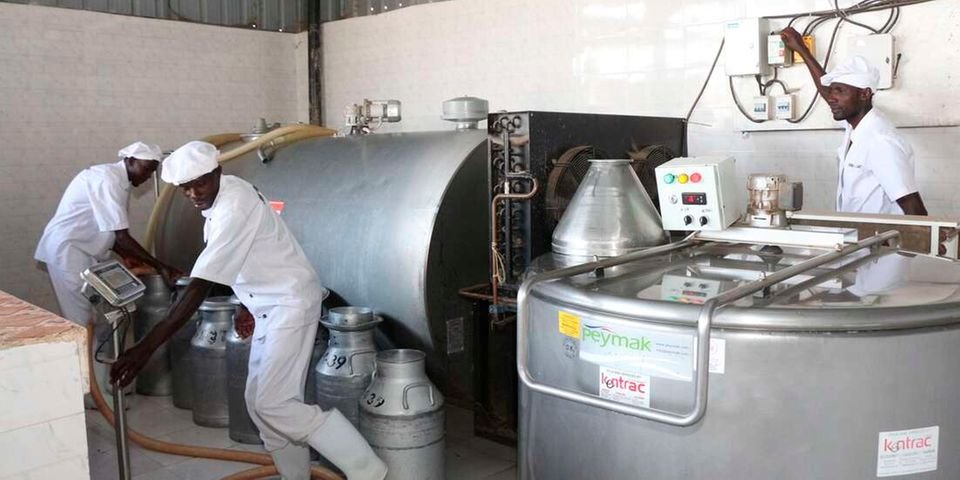
“I keep Friesian and Ayrshire animals mainly. I have 100 cows, 32 which I am currently milking,” says Mwangi, as he ushers in two newborn calves into his Joy Farm Lanet.
He says that the rest of the herd comprises 10 dry cows, 25 in-calf heifers, seven calves and 26 heifers.

Along with a barn and servant quarters, the five-acre farm also has lucerne and maize fodder plantings.
“I grew up with livestock and loved the idea of keeping them. My parents kept a single cow we called January, which we milked as we grew up,” he recalls.
He bought two cows in 2000 to fulfill his desire of beginning a dairy farm, but after being transferred from Nakuru to Nandi in 2004, he closed the facility.
He maintained his passion, nevertheless. Early in 2006, Mwangi restarted the business with a single cow, but as luck would have it, the cow passed away from an illness. He relocated from his quarter-acre property to five that he had bought after being sent back to Nakuru that same year.
After careful consideration, he acquired four Friesian cows from a farmer who was getting rid of them in 2008, and he raised them. On the herd, he spent Sh50,000.
“From a litre of milk that they were each giving, they moved to five, then 10 and 15 in three months.”
Encouraged, he purchased three more, and shortly after, his herd reached 15. In order to avoid having to pay for their upbringing, he sold the bull calves as soon as they were born.

After constructing a 64 by 40 foot modular cow barn, he increased his dairy herd to 24, then to 55. His 100 cows are currently housed in a 40 by 128 foot barn. Beginning with the calves, weaners, heifers, bullying heifers, in-calf heifers, dry cows, and milkers, the livestock is kept in the barn in seven categories.
The daily routine, according to farm manager Justus Githinji, begins at 4 am. He works with his six employees to clean, milk, and feed the animals.
“For milkers, we feed them maize silage, hay and lucerne in the ratio of 70, 15 and 15 per cent respectively. The feeding depends on the stage, with the milkers getting more silage while heifers do with hay alone,” he adds.
Additionally, dairy meal is supplied to the animals, which the farm creates based on how much milk each animal produces. The highest milker produces 42 liters per day, while the lowest produces just 14.
The food is stored in a refrigerator before being collected by a processor from Nairobi. The cows are milked by machines three times a day at intervals of eight hours.
“We collect 750 litres of milk daily and sell each at Sh540. Keeping in the cooler enables us to get better prices and avoid spoilage,” says Mwangi.
He has two coolers: a 1,100-liter cooler and a 3,00-liter cooler.
Mwangi claims that having the coolers, producing his own feeds, and cultivating fodder have helped him not only save costs but also turn the farm into a successful one.
“We use several ingredients to make the dairy meal. They include maize, maize germ, wheat bran, canola, meal, soya meal, lime, salt, toxin binder, bi-carbonate of soda and dairy premix,” he explains.
They treat the animals twice a month and deworm the calves and weaners once a month to prevent pests and infections.
Mwangi immunizes his cows twice a year against lumpy skin and foot and mouth infections, which claimed the lives of two of his animals in 2019.
Training is essential, he asserts, adding that he participates in courses presented by organizations like SNV Netherlands to get new knowledge.
“One of the lessons I have learnt from the venture is that you cannot keep few cows and operate optimally. Economies of scale help, but it takes time to achieve that. In my case, it took me about a decade.”
One of the challenges in the business is fluctuating milks prices, says Mwangi, with most of the time the processor determining the cost.
“The cost of running a dairy business is high but you can cushion yourself by planting maize for silage and growing fodder like lucerne. These are the small things make the difference,” says Mwangi, who holds farm visits for farmers from as far as Nyeri, Embu and Malindi, teaching them animal husbandry, management of pests and diseases and balanced feeding programmes to increase milk.
His target in three years is to milk over 100 cows, getting an average of 25 litres from each.
Gabriel Kwendo, a dairy technologist and fodder expert from Egerton University, says proper feeding in terms of proportion and quality and good disease management will help make a farm profitable.
He advises farmers to keep feeding records, as they assist in indicating what feeds have the highest yield potential, as well as health records to help track which disease a cow may be suffering from.
“Before one ventures into commercial dairy farming, they should engage a processor to have their milk delivered on time to avoid post-harvest losses.”
Source: Seeds of God










